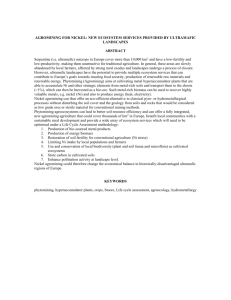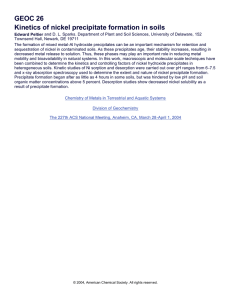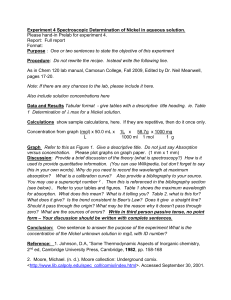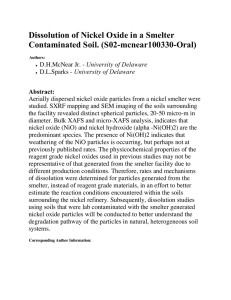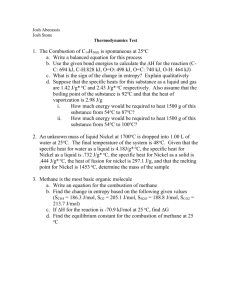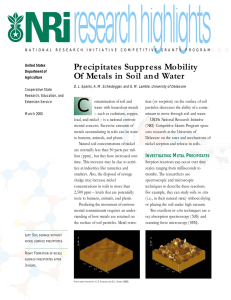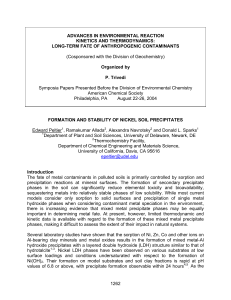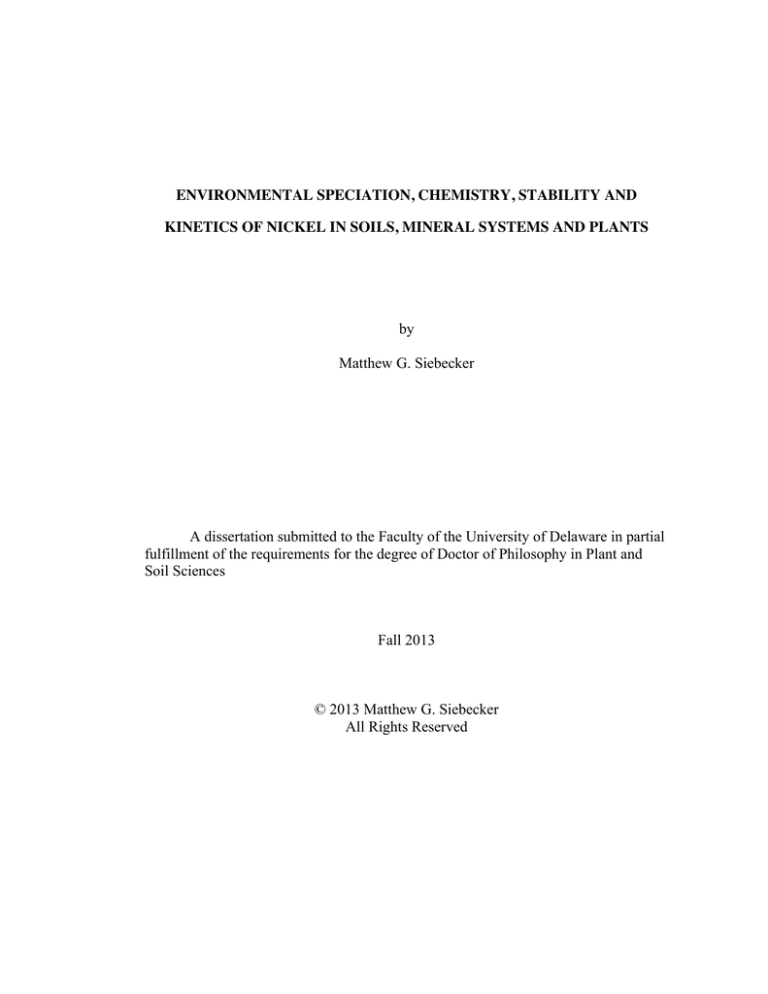
ENVIRONMENTAL SPECIATION, CHEMISTRY, STABILITY AND
KINETICS OF NICKEL IN SOILS, MINERAL SYSTEMS AND PLANTS
by
Matthew G. Siebecker
A dissertation submitted to the Faculty of the University of Delaware in partial
fulfillment of the requirements for the degree of Doctor of Philosophy in Plant and
Soil Sciences
Fall 2013
© 2013 Matthew G. Siebecker
All Rights Reserved
ABSTRACT
Soil chemistry is a branch of research stemming from soil science and was mostly
geared towards research for agriculture and farming. However, because of increased
awareness about the environment, soil chemistry now largely focuses on the chemical
processes in contaminated soils. The chemical processes in soil occur at the interfaces
between soil components such as minerals, humic substances, microbes, fungi, plants and
water, and they control contaminant mobility. In this dissertation four projects were
carried out to study the soil chemical processes of nickel. Nickel is a common
contaminant in soils polluted with “heavy metals” and a model element to study because other transition metals undergo similar chemical reactions. We find that nickel can
transform rapidly at the mineral-water interface into newly formed Ni-Al LDH
precipitates in tens of minutes, and we illustrate for the first time these fast reaction
kinetics in a “live” sorption reaction. Additionally, nickel hyperaccumulating plants have
no specific mechanism to preferentially remove nickel from minerals for transport into
their leaves, which was contrary to our hypothesis that the plants had some preferential
mechanism for nickel uptake. Lastly, we find that nickel is heterogeneously distributed
in ultramafic soils amongst iron and manganese oxides and in the silicate minerals of
primary and secondary ultramafic rocks and serpentinite, which illustrates the importance
of climate on weathering processes in soils, and that hyperaccumulating plants can
remove nickel from a variety of nickel mineral species.
xix

